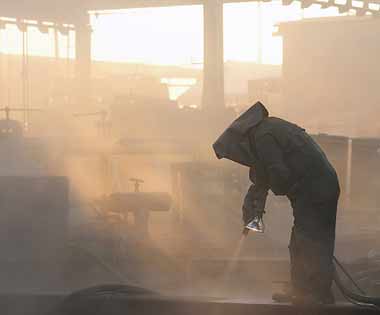Combustible dust is any material capable of igniting when released into the air. Many factories and facilities process materials that are not considered explosive or flammable could include combustible dust hazards. During the processing or transportation of these otherwise benign materials, dust is released andaccumulates. These particles or dust can be ignited by a spark (including static electricity) or fire anywhere in the facility resulting in a dust explosion.
Combustible dust explosions are a constant hazard in certain factories, coal mines, and grain processing facilities. The explosions can cause enormous overpressures inside structures, causing major structural damages and dangerous flying debris. Many people have been fatally injured in combustible dust explosions.

Need Maintenance on an
Existing Gas or Leak Detection System?
Schedule a Field Service Engineer who will inspect your facility and make sure it meets all compliance requirements.
